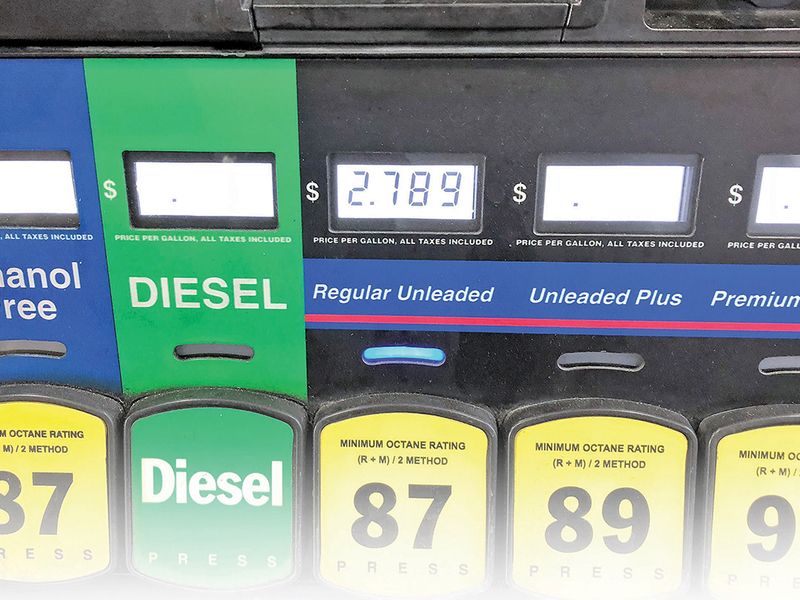
After decades of slowly building up market share, diesel vehicles are expected to be leapfrogged by electric vehicles within the next two years.
Diesel-powered trucks aren’t going away. They’re expected to maintain their small share of the U.S. light-vehicle market — especially in the heavy-duty pickup space — through at least 2032, IHS Markit says.
But EVs have the potential to catch on in a way that diesels haven’t, especially as body styles with more mass appeal reach the market. Fifteen new battery-electric and plug-in hybrid vehicles are expected in 2021 and 2022, and 11 of them are SUVs or pickups, according to J.D. Power.
“As of now, you either have to want an EV hatchback, or you’re in that premium space for an EV. There really isn’t a middle ground,” said Tyson Jominy, J.D. Power vice president of data and analytics. “As the body types start to hit what Americans want, we could really start to see EVs start to outpace diesel.”
Even as EV sales outpace diesel volume, diesel’s share of the U.S. market will be consistent, at around 4 percent, for at least the next decade, according to IHS Markit. “The medium- and heavy-duty diesel area, I would expect at least 20 more years of transition time, unless there is some enormous breakthrough of technology, either on the battery side or on the fuel cell side,” said Bruce Coventry, managing partner at Motormindz.
Some automakers, including General Motors, continue to invest in diesel engines. GM launched the 3.0-liter Duramax turbodiesel engine on the 2020 Chevrolet Silverado and GMC Sierra, and for the first time since 1999, Chevy is offering diesel options on full-size SUVs, with the 2021 Tahoe and Suburban.
GM expects full-size diesel SUV buyers will be focused on the fuel economy and full-tank range, spokesman Monte Doran said.
Fuel economy for the four-wheel-drive, diesel-powered Tahoe and Suburban is 22 mpg in city and highway driving combined. The 2021 Tahoe with the 5.3-liter V-8 engine gets 18 mpg combined, and the Suburban gets 17.
Most of GM’s heavy-duty diesel pickup buyers opt for high-end trims and use their vehicles to tow large trailers, such as campers, horse trailers or race trailers, while light-duty diesel pickup buyers are drawn to the fuel efficiency and low-end torque, Doran said.
“I definitely see the heavy-duty pickups continuing with diesel. Diesel dominates that segment,” said James Martin, senior research analyst for North American powertrain and compliance at IHS Markit.
More than half of heavy-duty Chevy Silverados and Ford F-Series pickups are diesel-powered, he said. “The good thing about diesel in those usages is it is less affected by road load and by speed and other elements that might decrease fuel economy,” Martin said.
GM expects diesel- and battery-powered vehicles to sell side by side for the foreseeable future, especially in the full-size pickup and SUV segments, Doran said.
But if an automaker has a certain allotment of R&D cash to spend, it’s more likely to invest in EV development, Coventry said. “We’re going to see those type of choices that are being made,” he said.
PSA Group, for example, plans to scale back diesel engine manufacturing in favor of EV development, CEO Carlos Tavares told Automotive News Europe.
Diesel-powered vehicles make up about a third of PSA’s sales in Europe, down from about half a few years ago, he said.
“We are doing what we need to do to continue to sell diesel cars because the customers are asking us to do so,” said Tavares, who will remain CEO after PSA merges with Fiat Chrysler Automobiles early this year. “But there is a point in time where the constraints will generate such a significant additional cost or engineering resource consumption that we will decide to reallocate those resources.”
Still, pickup buyers who use their vehicles for long trips are unlikely to shift to EVs anytime soon, even as electric pickups begin go on sale.
Diesel-powered trucks “definitely have a place in the world, and there’s not a lot of clear substitute for it right now,” said Doug Betts, president of the automotive division at J.D. Power. “Diesel has got to stay. It will be a big problem for people who have to tow things or haul heavy loads if they can’t use a diesel to do it.”
The range and infrastructure most diesel buyers need also isn’t yet available for EVs.
“Americans are used to being able to drive long distances, stop for five minutes for gas and keep going,” said Sam Fiorani, vice president with AutoForecast Solutions. “Having that ability in a diesel is fantastic. Having the ability in an electric doesn’t exist.”
Lindsay Chappell contributed to this report.